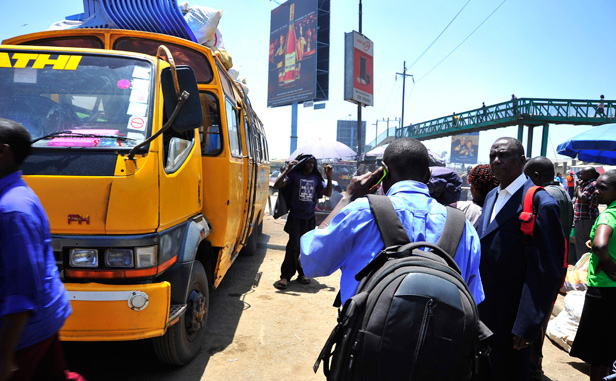How Cell-Phone Data Could Slow the Spread of Malaria
Location data suggests a better way to fight a disease that kills a million people a year.
Researchers have mapped precisely how human travel affects the spread of malaria in Kenya by using cell-phone location data. The effort is the largest ever to use cell-phone data as an epidemiological tool.
The study captured the anonymized travel habits of nearly 15 million Kenyans between June 2008 and June 2009. Their movements were gleaned from 11,920 cell towers. The data was then mapped against the incidence of malaria as recorded by health officials.
The results made clear that malaria outbreaks during that period began in Kenya’s Lake Victoria region and spread east toward the capital of Nairobi. This suggests that health officials could avert transmissions by focusing their efforts in the lake region, says Caroline Buckee, an epidemiologist at the Harvard School of Public Health and one of the authors of the study, which is being published today in the journal Science.
This story is only available to subscribers.
Don’t settle for half the story.
Get paywall-free access to technology news for the here and now.
Subscribe now
Already a subscriber?
Sign in
“If you are going to try and eliminate malaria, you’ve really got to target interventions where most infections originate,” she says. “Otherwise, you are mopping up problems in areas where the infections didn’t originate.”
Mosquitoes spread the malaria parasite. But infected people—particularly those who are immune and travel without feeling symptoms—can spread the disease widely if they’re later bitten by mosquitoes that go on to bite other people. Malaria kills about a million people each year, most of them children under age five in sub-Saharan Africa.
Researchers at several participating institutions—including Carnegie Mellon University and the Kenya Medical Research Institute—built maps of parasite movements between sources of infections and areas where people got sick. They could infer the probability that residents in particular communities would become infected, and the daily probability that visitors to malaria-prone areas would become infected.
The study provides a new angle on how to use cell phones to improve public health in Kenya. Startups and NGOs are also building a variety of apps and services to provide medical information and reminders through cell phones (see “Kenya’s Startup Boom”).
Buckee says the researchers are still working with Kenya’s Health Ministry to devise action plans, but several general strategies are possible. As well as using the data to decide where to focus malaria control programs, the research could result in programs to send warnings via text message to people traveling to high-risk areas.
While cell phones are understood to have power to map human movements and also to glean whether people are sick (see “An App That Looks for Signs of Sickness”), the Science study was the largest ever attempted to use cell phones as an epidemiological tool. “To my knowledge, this is the first time that this resolution of data, and this amount of data, has even been used with infectious disease prevalence to map out these mobility and risk factors,” Buckee says.
Justin Cohen, senior technical advisor for malaria to the Clinton Health Access Initiative, a foundation started by former President Bill Clinton, says human travel is a key factor in the spread of malaria, but travel patterns are not well understood in many parts of the world. “Describing the actual movement patterns is thus an important step,” he says.
When the island of Zanzibar reduced malaria over recent decades, for example, a big surprise was that Oman also saw a big drop in cases. It turned out that the widely separated regions had strong migration networks, Cohen says. Similarly, while it’s long been known that Lake Victoria is a very malarial part of Kenya, “the idea that it’s a source of malaria for other regions is not self-evident. People are quite poor there, and ethnic divisions in Kenya mean that it’s not clear how often people would travel to visit other parts of the country.”
Nathan Eagle, a coauthor of the study who is an adjunct assistant professor at the Harvard School of Public Health (and Buckee’s spouse), says the project is an example of what can be done with cell phone “big data” in the developing world.
Eagle is working on a project to develop a credit history using a person’s record of purchases, including of airtime, on mobile phones—activity that implies they have income at regular intervals. “There are lots of things that can be done—anything from figuring out where to invest infrastructure in slums, to bootstrapping a credit history when there is no other record about someone’s behavior than movements and transactions they have made on phones,” he says. “My research agenda is about trying to repurpose all this data being generated in the wake of human behavior in a way that improves the lives of people who are generating that data.”
